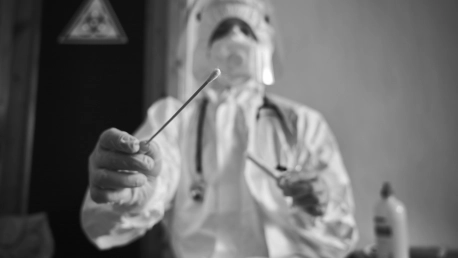Protecting cattle from disease is essential for any livestock operation, especially in the face of threats like Highly Pathogenic Avian Influenza (HPAI). Implementing effective biosecurity measures is not just about keeping animals healthy; it’s about securing the economic stability and productivity of agricultural businesses. Strong biosecurity tactics prevent the spread of infections, which can have devastating impacts on herds and, consequently, on the livelihood of farmers. Maintaining strict protocols for hygiene, monitoring animal health, controlling farm access, and managing feed and water sources are all critical components of a biosecurity strategy. These steps help to create a barrier against pathogens that could otherwise enter a farm environment and spread among the herd. As the agricultural landscape continues to face new challenges, staying vigilant about biosecurity is key to ensuring the longevity and success of livestock farming. Adhering to recommended guidelines and being proactive about disease prevention can help mitigate the risks, keeping herds safe and businesses thriving.
Recognize and Acknowledge Early Warning Signs of Illness
Being able to quickly identify signs of illness in cattle is an essential step in preventing the spread of disease. Producers should consistently monitor their cattle for reduced feed intake and alterations in rumen motility, which could be indications of health issues. Drops in milk production, along with changes in the quality of the milk, such as unusual thickness or discoloration, are also important warning signs. Observing cattle for low-grade fevers and assessing the condition of manure can further aid in the early detection of sickness. Prompt communication with a veterinarian is critical when these symptoms are noticed.
Review and Reinforce Employee Biosecurity Measures
Maintaining farm biosecurity is a critical task that falls heavily on the shoulders of farm employees. To mitigate the risk of pathogen spread, it is strongly recommended that farm workers abstain from consuming unpasteurized milk. The implementation of farm-specific footwear that is properly sanitized and stored can significantly reduce contamination. Workers should ensure they are wearing clean clothing and disinfected shoes before entering farm premises. This is especially vital for those in contact with livestock at other locations.Hand hygiene is another cornerstone of biosecurity; employees must regularly wash their hands to eliminate potential contaminants. It is also advised to restrict food consumption to areas away from the animals to avoid unwanted pathogen transfer. To enhance the biosecurity protocol, it’s beneficial to limit farm access to only those who are essential. Keeping a detailed visitor log assists in tracking and managing the threat of biosecurity breaches.These measures serve to protect the farm environment from infectious diseases, safeguarding both animal health and the broader agriculture community. It’s a collective effort that ensures the sustainability and productivity of the farming enterprise.
Establish Strict Farm Biosecurity Protocols
A robust farm biosecurity plan begins with a quarantine period for new animals and extends to rigorous health monitoring. Prior to introducing new animals to the herd, their health history should be reviewed. It’s critical to ensure that staff is trained to recognize signs of illnesses, as this facilitates prompt management of the disease. Disinfecting transportation and farm equipment, alongside implementing a rigorous pest control program, are key measures in maintaining a sanitary environment. Reducing interaction with wildlife and controlling the flow of traffic onto and around the farm are further steps to prevent disease outbreaks.
Implement Safety Precautions When Handling Suspected Ailing Cows
When illness is suspected, the affected cows should be isolated from the rest of the herd to minimize the risk of contagion. Producers should collaborate with their herd veterinarian to decide on the appropriate steps for sampling and testing. Personal protective equipment (PPE), such as masks, gloves, and eye protection, should be used by anyone working with sick animals. After contact, it’s important to avoid touching one’s face, change clothes before interacting with healthy cattle, and adhere to proper disposal procedures for PPE, followed by thorough handwashing.In summary, adhering to these biosecurity practices will not only protect cattle from potential disease outbreaks but also contribute to the overall sustainability and success of the farm. Resources for setting up biosecurity plans are readily available, and veterinary and extension services can provide additional support and information. By taking proactive measures and monitoring herd health regularly, cattle producers can maintain a strong line of defense against infectious diseases.









